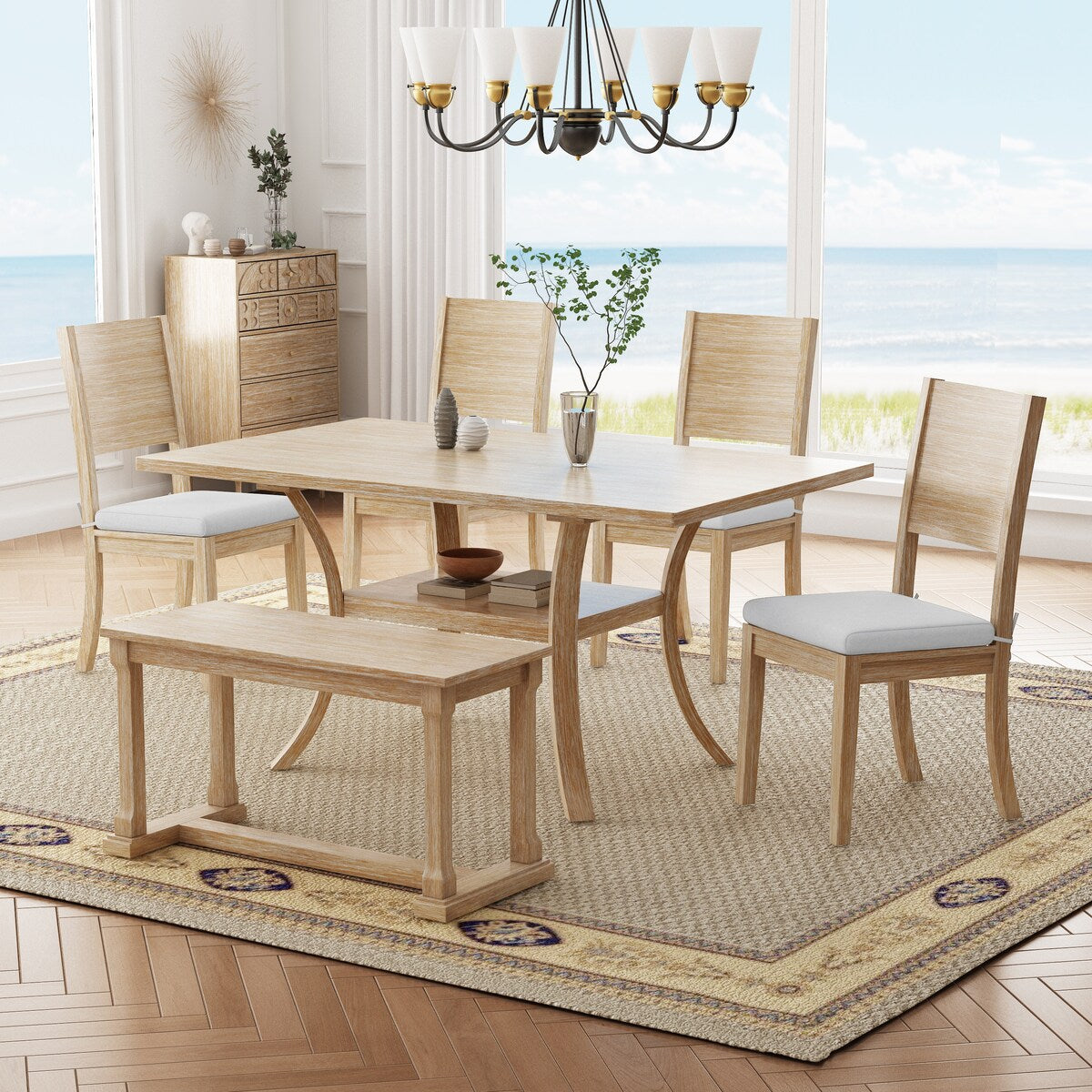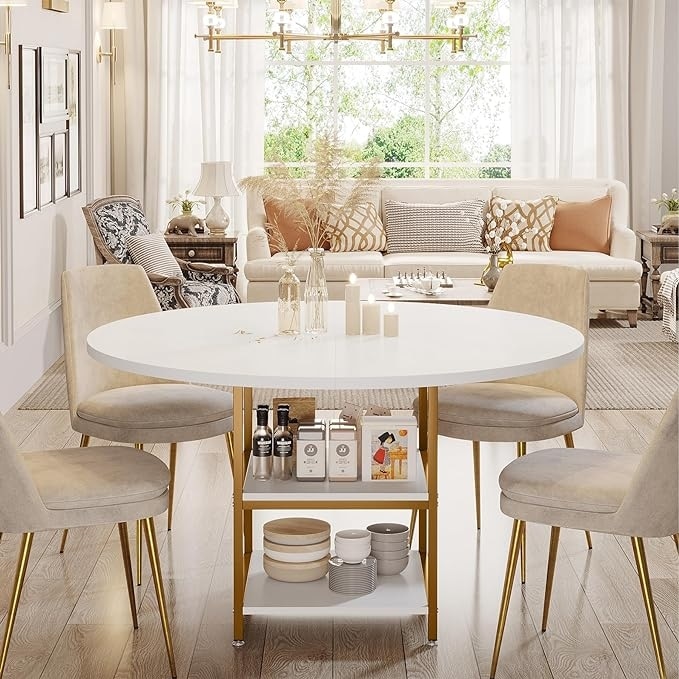Tips for Installing Dining Room Table Legs for a Modern Look
From Typical to Modern: Locate the Ideal Eating Area Table Legs for Your Style
While timeless styles such as cabriole and turned legs evoke a feeling of ageless refinement, contemporary designs like barrette and geometric choices offer a chance for striking aesthetic passion. As you think about these aspects, the concern continues to be: exactly how can you effortlessly incorporate these varied leg designs to create a harmonious dining experience?
Understanding Table Leg Styles
The variety of dining-room table leg styles can dramatically affect both the looks and capability of the room. Each leg design adds unique practical features and visual components, dealing with varied style preferences and use demands. Comprehending these styles is critical for picking the ideal eating table that lines up with your overall interior design vision.
For instance, conical legs provide a tidy, traditional look that can enhance an area's beauty, while pedestal bases provide stability and take full advantage of legroom, making them optimal for smaller sized rooms. Hairpin legs, a trademark of mid-century modern style, present a commercial style, enabling an airy, open feeling. Likewise, trestle legs evoke rustic appeal, offering durable assistance and a sense of timelessness.
In addition, the choice of materials plays a significant duty. Wooden legs can bring warmth and texture, whereas steel alternatives often share a streamlined, contemporary vibe. Ultimately, recognizing table leg styles is vital for producing a cohesive eating location that mirrors individual style while ensuring usefulness and comfort. By attentively thinking about these aspects, you can enhance both the useful and aesthetic charm of your eating area.
Traditional Table Leg Options
When choosing dining-room table legs, conventional choices frequently personify timeless elegance and workmanship. These designs reflect an abundant heritage and a dedication to quality, making them suitable for those that value classic visual appeals.
Among the most famous typical leg designs is the cabriole leg, characterized by its elegant curved shape. This layout commonly features attractive carvings and is most frequently located in Queen Anne and Chippendale furniture. One more popular option is the transformed leg, which flaunts a collection of smooth, rounded shapes that supply a classic look while preserving security.
In addition, the straight leg, while straightforward, offers a sturdy and basic structure that can blend effortlessly with a variety of tabletop styles. For those drawn to ornate describing, claw-and-ball feet legs evoke a feeling of splendour and can work as a stunning centerpiece in any kind of eating space.
Finally, stand bases, although not purely legs, provide a different conventional option that permits for enough legroom and can be perfectly sculpted. Each of these standard leg designs adds to the total setting of an eating space, weding function with aesthetic allure.

Modern Table Leg Designs
Modern table leg designs provide a diverse variety of designs that emphasize innovative products and tidy lines. These styles often focus on capability while acting as striking focal site here points within an eating room. Minimalist aesthetics prevail, with legs crafted from materials such as metal, glass, and crafted timber, which contribute to a ventilated and modern feel.
One preferred style is the barrette leg, characterized by its slender, tapered structure that offers security without frustrating the table top (dining room table legs). This design is commonly discovered in mid-century modern-day furnishings and can easily complement numerous eating table shapes. Another pattern is making use of geometric shapes, where legs may take on angular or asymmetrical kinds, including aesthetic passion and a touch of artistry

Mixing Styles for Distinct Spaces
Commonly, homeowners look for to create distinct dining areas that reflect their individual style by mixing different style elements. This approach permits the incorporation of varied appearances, resulting in a harmonious yet unique atmosphere. As an example, coupling a rustic wooden table with streamlined, modern-day steel legs can produce an appealing contrast that elevates the space's total allure.
In addition, incorporating vintage table legs with contemporary tabletops can evoke a feeling of background while preserving a contemporary sensibility. Such combinations not just display private taste but also urge creativity, permitting house owners to curate a room that really feels both personal and welcoming.
Color plays a crucial role in this blending process; picking table legs that match or contrast with the existing color design can improve visual interest. Whitewashed legs can soften the boldness of a dark table surface, creating a well balanced aesthetic.
Tips for Selecting the Right Legs
Choosing the right table legs is necessary for achieving both capability and visual charm in your eating area. Begin by taking into consideration the overall design of your room. Standard setups take advantage of legs that include complex makings or transformed designs, while modern areas might require smooth, minimalist designs.
Next, analyze the elevation and stability of the legs. dining room table legs. Common eating tables vary in between 28 to 30 inches in elevation, so ensure the legs click over here now complement this dimension for convenience. Additionally, robust materials, such as hardwood or metal, can enhance stability and long life
Examine the leg shape also-- choices consist of straight, tapered, or stand layouts. Straight legs supply a classic appearance, while tapered legs can include a touch of sophistication. Pedestal bases offer sufficient legroom and are optimal for smaller areas.
Verdict
In recap, selecting the optimal dining space table legs requires mindful factor to consider of both contemporary and typical designs. Traditional alternatives such as cabriole and transformed legs provide timeless beauty, while modern layouts like barrette and geometric shapes provide a contemporary touch. By integrating leg style, height, and material with the overall decor, a natural and welcoming ambience can be achieved. Eventually, the selected table legs should show the desired aesthetic, improving the dining experience within the room.
The range of dining area table leg designs can dramatically affect both the aesthetic appeals and performance of the room. Ultimately, comprehending table leg designs is crucial for producing a natural eating location that reflects individual style while making sure practicality and comfort.One of the most renowned standard leg styles is the cabriole leg, defined by its graceful rounded shape. Straight legs use a classic appearance, while tapered legs can include a touch of elegance.In summary, choosing the ideal dining area table legs requires careful consideration of both modern and standard designs.